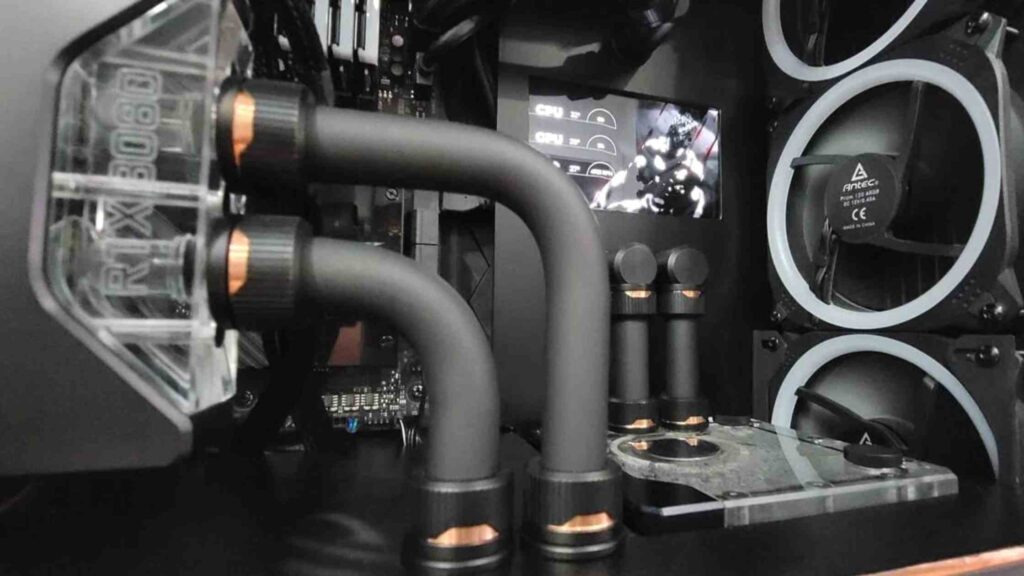If you’re looking for custom loop fittings, then you’ve come to the right place. Whether you need to install a loop for your plumbing system, or want to build your own, these specialty fittings are designed to meet your specific needs. Depending on your specifications, you can use Copper, PETG, or Acrylic tubing to build a loop that is sturdy and strong.
Different Types of Tubing
There are several different types of tubing. Each has its own benefits and drawbacks. However, there are a few materials that are commonly used in liquid cooling. You need to be sure you select the right material for the job.
Pros & Cons
If you’re building a Custom Loop Fittings, it’s important to decide on the best material. It can make a difference in your end result. Whether you use soft or rigid tubing, you need to understand the pros and cons.
Soft tubing is generally cheaper and easier to work with. In addition, you can buy it in various colors, sizes, and thicknesses. The downside is that it is not UV light friendly. This makes it less clean than hard tubing.
Specifications
Rigid tubing, on the other hand, is more expensive. It needs to be cut and bent to specifications. Getting it to fit can be a challenge. Depending on the brand, the size tolerance can vary.
Acrylic is a very clear material. The best part is that it will not react with coolant. Although it takes more time to heat than PETG, you won’t have to worry about cracking or breaking it.
Flexible Plastic
PETG, on the other hand, is a more flexible plastic. While it doesn’t look quite as good as acrylic, it is easier to bend and has a lower melting point.
Acrylic and PETG are both good choices, but it’s important to know which one you choose. Choosing the right material for your Custom Loop Fittings can be tricky. Before you build your first liquid cooling system, be sure you research the different options and choose the material that suits your needs.
Hard Line Loop Fitting
The easy solution for a Hard Line Custom Loop Fittings is to use PETG tubing. This is a great material to work with because it is a flexible plastic that is easily bendable with the right tools. It can be used in a straight run and can even be bent into angled fittings.
There are a few downsides to working with this type of material, though. For example, PETG has a lower melting point than acrylic and can be damaged by high water temperatures. It is also prone to staining.
Acrylic is a more durable material, but it can be difficult to work with. Acrylic is harder to bend and it is often scratched and harmed by heat. Also, it takes longer to reach a desired temperature.
Disadvantage of Acrylic
Another disadvantage of using acrylic is that it is prone to leaching color. This can be a problem if the tubing is placed in direct sunlight.
A better option for a hard line Custom Loop Fittings is to use copper. Copper is a metal that is incredibly strong and is often used for other purposes as well. It is also known for its superior heat dissipation.
PETG is also a great material, but it does have some limitations. For example, it tends to get stringier the higher the temperature. As a result, it is usually best to start at a slightly lower temperature.
Creates a Unique & Robust Loop
Copper tubing is a great material for building loops, but it can be tricky to work with. The material is also prone to cracking. In addition, it can be expensive.
There are many different types of copper tubing available. For example, type DWV is used for unpressurized applications. It has a thin wall section and yellow or light orange printing.
Typically, this type of copper tubing is sold in hard drawn straight sections. However, it can also be available in a variety of soft anealed rolls.
Soft copper is easier to bend than rigid. But it can be difficult to join copper tubing, because the joints are not designed to make a seal. So, if your loop requires a tight seal, it is advisable to choose a different tubing material.
Boiler Support Equipment
Plastic tubing is a good alternative. However, it has been known to cause premature failures in boiler support equipment. And, its lower melting point makes it more susceptible to high water temperatures.
Acrylic is another option. Although acrylic is slightly more clear than PETG, it can stain and is also more difficult to work with. Also, it has a higher heat threshold.
Rigid copper is also a good choice. This type of tubing can be joined using a compression connection. When joined, it will form a water-tight seal.
It can also be joined by crimped or pressed connections. These methods are cleaner and do not require the use of an open flame. They do, however, require special copper fittings.
Cooling System
There are a number of different types of fittings that are able to provide you with the ability to remove various components of your cooling system without having to drain your coolant. These fittings are made in a variety of different styles, and can come with different kinds of valves as well.
In general, the best fittings to use for this purpose are those that have a spring-loaded piston that opens a passageway for coolant when connected. Typically, this type of fitting is accompanied by a self-locking torque-free tube. However, there are also specialty fittings available that are made for certain types of applications.
If you are installing a new custom loop for the first time, you will need a few items. You will need a reservoir, a pump, a radiator, and some tubing.
A flow meter will tell you how much coolant you are moving through your system. It will measure the flow rate and display it on an LED collar.
Portable Air Compressor
If you have a small, portable air compressor, you can easily flush out the old coolant. This will help prevent corrosion in your system.
When you’re ready to remove a portion of your cooling system, you can use a drain valve. These fittings make it easy to change out your coolant and keep your system free of any spills.
When you have a drain valve installed, you can replace your old coolant with new coolant whenever you need it. This is an important step because you don’t want to run your pump without water. Also, if you are running a pump without water, you will reduce the performance of your system.
Corrosive Solution
Galvanic corrosion is an electrochemical process. It occurs when two dissimilar metals are electrically connected and immersed in a corrosive solution. The electrolyte can be a liquid, a condensed film, or a moist solid.
Galvanic corrosion can occur when aluminium and steel are exposed to a moist, humid environment. It can also happen in heat exchangers where tubes and tube sheets are in contact. This type of corrosion can also occur in factories where there is a lot of dust.
Combat Biological Growth
Typical cooling loops consist of a base liquid, such as Ultra-Pure H20, and corrosion inhibitors. These compounds are necessary to prevent corrosion and protect parts. In addition, purpose made coolants include a chemical additive to combat biological growth.
Using distilled water as the base liquid may lead to galvanic corrosion. De-ionized water is not a good choice, as it contains low oxygen content and quickly takes up ions. Copper, on the other hand, can be used in such applications.
Galvanic Corrosion
Galvanic corrosion can be prevented by not mixing metals and picking metals in close proximity to each other. Similarly, anti-corrosive additives can be added to the coolant to further reduce the rate of corrosion.
Galvanic corrosion can occur in cooling systems, especially those involving steel alloys or copper. These types of alloys do not interact well with de-ionized water.
Galvanic corrosion can occur in circulating water systems with other metals, such as nickel and zinc. However, it is not always possible to prevent galvanic corrosion. Some techniques include the use of sacrificial anodes.
Specialty Fittings Serve Specific
A specialty fitting is a fitting designed specifically for a given purpose. They can be made from a variety of materials from bronze to aluminum. Most are designed to serve one or two functions such as fluid transfer and coolant management. Some can even be configured for multiple uses. Many are manufactured by companies such as Dragon Valves, NAV-SEA and ASI Manufacture. These include everything from valves to hoses to insulators.
Conclusion:
Other companies that manufacture such fittings include OPW Engineered Systems, Aerocom Specialty Custom Loop Fittings, and Metalloy. Some companies specialize in certain facets of the petrochemical industry while others focus on a wider array of applications. For example, OPW offers a range of quick disconnect fittings that are suited for the most demanding applications. The company also has its own brand of specialty fluid connectors aimed at the chemical industry.
For the most part, all that is required to select the best fittings is a little research. With the right planning and a bit of elbow grease, the process can be a fun and rewarding endeavor. Using specialty fittings for one’s petrochemical needs can be the beginning of a long-term partnership that may yield dividends in years to come. Whether it’s the aforementioned oxford or the equivocal yankee, a good relationship is one to be proud of. To make the most of a partnering with a reputable company such as OPW Engineered Systems, one should take some time to learn about the company’s offerings before committing to one particular brand.






More Stories
MSI Gaming GS63 Review & Complete Features